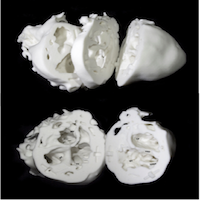Article
Study Raises Questions about Long-term Efficacy of Warfarin
Author(s):
Among 968 patients, initial stability was no indicator of ongoing stability: only 34% of them remained in the therapeutic window at least 80% of the time.

Analysis of prospective registry study data indicates that only a minority of patients who use warfarin for atrial fibrillation (AF) maintain stable international normalized ratios (INR) over the long run.
Investigators, who published their findings in the Journal of the American Medical Association, examined records from 3,749 AF patients enrolled in the Outcomes Registry for Better Informed Treatment of Atrial Fibrillation. They found that only 968 (26%) of those patients achieved success during their first 6 months on warfarin and kept INRs between 2.0 and 3.0 at least 80% of the time.
Among those 968 patients, moreover, initial stability was no indicator of ongoing stability. Patients underwent INR measurements an average of 13 times over the next year, and only 34% of them (95% confidence interval [CI], 31%-37%) remained in the therapeutic window at least 80% of the time.
Higher degrees of initial INR stability did not predict higher degrees of subsequent INR stability. Of the 376 patients who were 100% stable during the initial 6 months — i.e. remained within therapeutic range at every measurement in the first 6 months — only 37% were in range during 80% of their measurements over the year that followed.
The investigators also considered how far patients strayed from therapeutic range and reported that 36% of all patients who started off at least 80% stable and 33% of patients who started off 100% stable were found to be dangerously out of range at least once during the subsequent year.
The study authors wrote that their findings are likely to have less impact on patients with newly diagnosed cases of AF — who typically begin treatment on non-vitamin K oral anticoagulants (NOACs) — than on long-term patients. All long-term patients began on warfarin and many remain on warfarin because it is cheaper than any NOAC, and — so long as they happen to be in the therapeutic range when they happen to get tested — their physicians see little reason to take them off a drug that appears to be working.
“What these results essentially tell us is that patients’ past performance on warfarin doesn’t predict their future performance. Just because patients have done well on warfarin in the past doesn’t mean they will continue to do well, and so it does call into question whether it is appropriate to switch them to a NOAC,” said Sean Pokorney, MD, an electrophysiology fellow at the Duke University School of Medicine who was the study’s first author.
“It’s not appropriate for every patient to be treated with a NOAC, but this study shows that all patients eligible for a NOAC, even those who have done well on warfarin in the past, should have a shared decision-making conversation with their health-care provider about considering a change.”
Analysis of patient data found several factors that predicted greater warfarin stability. Patients whose INR values were at least 80% stable in the first 6 months had been prescribed warfarin longer at baseline than those with unstable INR values (4.4 years vs 3.8 years; P=0.003). They also had lower CHADS2 scores and lower CHA2DS2VASc scores (p<0.001). Findings did not vary by sex.
























